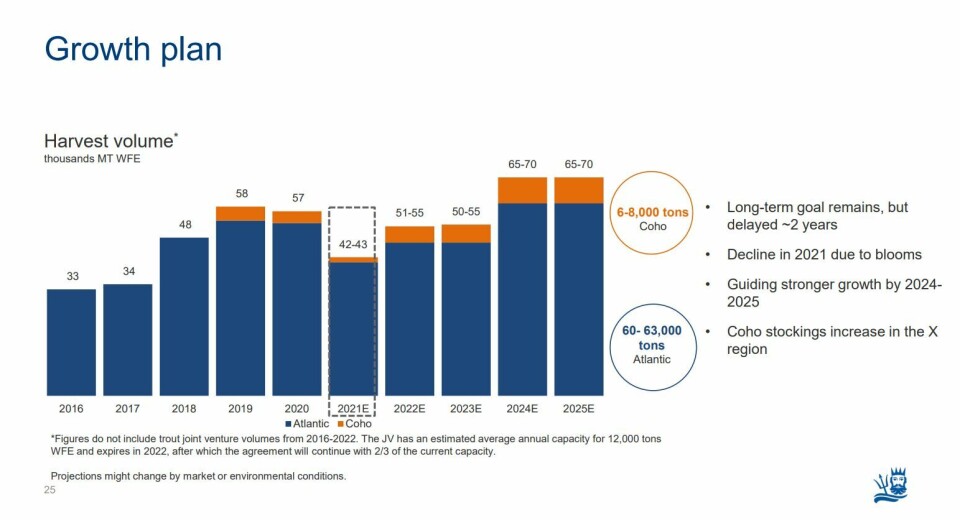
Future looks brighter for algae-hit Camanchaca
Chilean Atlantic and coho salmon farmer Salmones Camanchaca made an operating profit of US $17.6 million in the fourth quarter of 2021, due in large part to a 47% increase in salmon prices compared to Q4 2020, when the company made an operating loss of $8.8m.
Camanchaca harvested 16,842 tonnes (whole fish equivalent) of salmon in the quarter - 15,002 tonnes of Atlantic salmon and 1,840 tonnes WFE of coho salmon. The harvest in the same period in 2020 was 18,600 tonnes.
The company said Atlantic salmon volume was still affected by lower average harvest weights of 4.5 kg compared to 5.6 kg in Q4 2020. The smaller fish are a consequence of an algal bloom in the Comau Fjord, Los Lagos, in the first half of 2021. Camanchaca lost 1.6 million Atlantic salmon, the equivalent of 2,700 tonnes of biomass, because of the bloom.

Volume recovery
The cost of Atlantic salmon increased 15% year-over-year, due to continued harvesting of fish from sites in the fjord.
Camanchaca harvested around 42,000 tonnes for the full year, and estimates an increased harvest volume of between 51,000 to 55,000 tonnes this year, of which 45-48,000 tonnes will be Atlantic salmon and 6,000-7,000 tonnes coho.
Vice chairman Ricardo García said: “We are pleased with the volume recovery and results obtained in this fourth quarter, which shows once again the capabilities of our company, leaving behind the episodes of algae blooms from the beginning of 2021.”
García said the global context for salmon farming is favourable, “as alternative proteins are under pressure due to their effects on greenhouse gases, and due to the growth on demand for healthy and nutritious proteins with low emissions and little use of water”.






















































